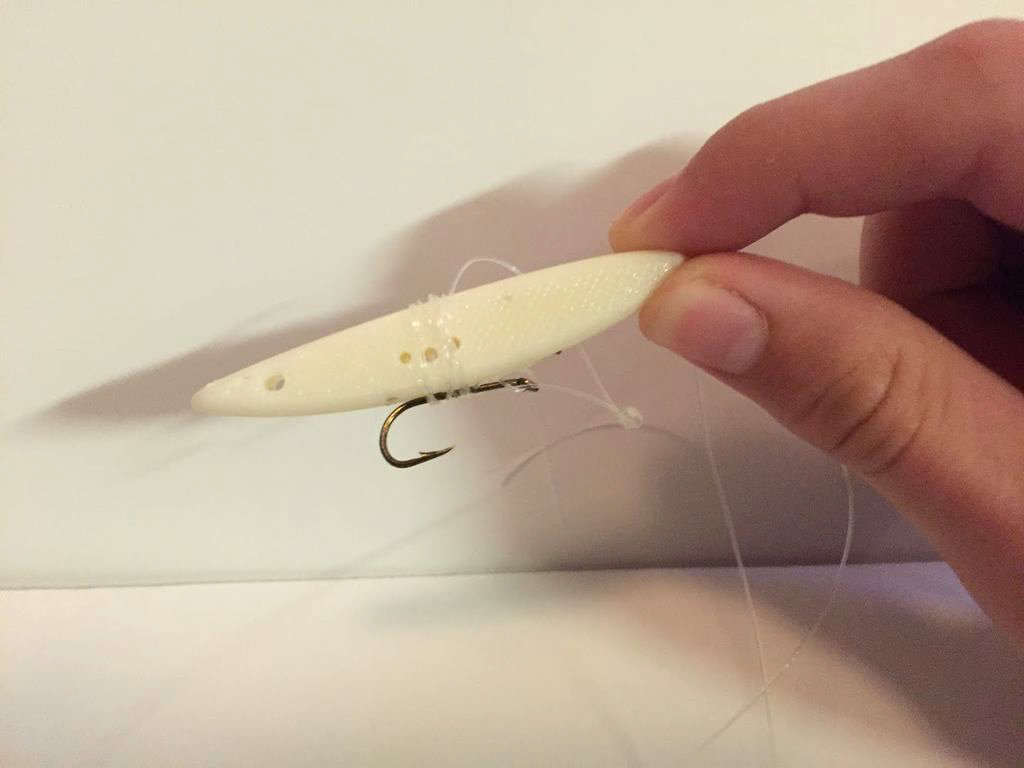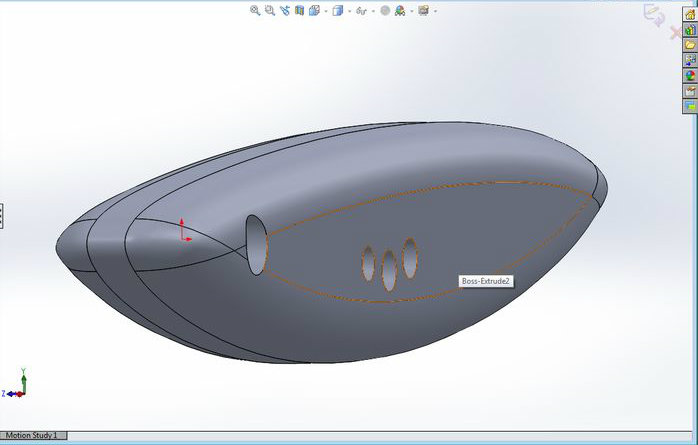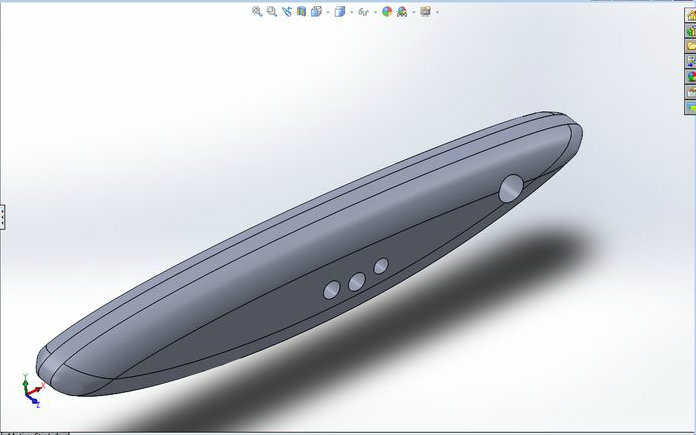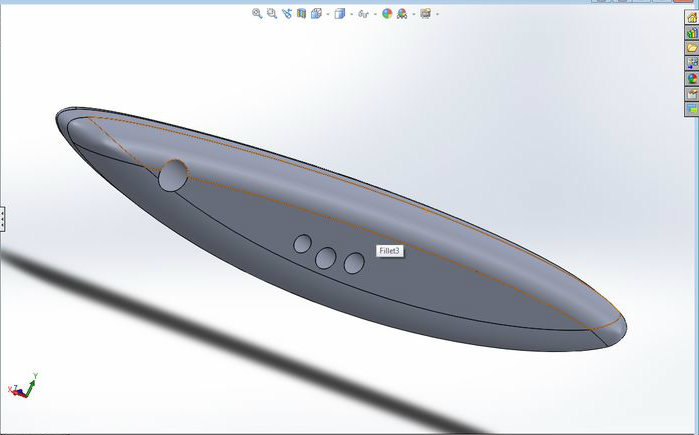Custom 3D Printed Fishing Lure
by Legoguylolforever in Workshop > 3D Printing
3302 Views, 5 Favorites, 0 Comments
Custom 3D Printed Fishing Lure

For my first 3D printer project, I thought I'd tackle something different: A fishing lure. Right now the market is limited to commercially manufactured models, and custom handmade ones crafted from wood with the use of power tools. These are both perfectly acceptable and functional methods of production, but they don't allow you much customization if at all. And the ones that do (i.e. handmade wooden ones) require tools and experience which most people do not possess, and this can deter some people from fishing.
If I provide a guide on how to custom design your own fishing lures, specifically designed for the conditions you'll be fishing in, species of fish, size, and to experiment with novel designs and features, this will help bring many more people into the hobby who wouldn't have done so otherwise. The .STL and .SLDPRT files so you can customize my specific design, or rescale it and print it directly are directly below. Though keep in mind, this tutorial is specifically made for Solidworks 2015/2016, as that is the program I have at my disposal. Though most of the tools and processes should be available in other 3D CAD programs, their names and specific functions may vary.
Before You Get Started: Fishing Responsibly
Being all for the conservation of animals, I suggest you follow this step. If you use too large or too small a lure or hook for a fish, you can easily kill or maul the fish needlessly, which will waste the meat as well as spoil the fish. And seriously hurt it, which sucks for all of us (including the fish). For any fish under 12 inches, I suggest you use hook and bait, or a "soft" lure made from a hook weight, and acrylic/feathers. Most fish under this size like crappies and sunfish are sometimes referred to as "paper jaw" because of how delicate their mouths and jaws are. Always be careful and gentle while removing hooks, and use a dedicated tool like a hook remover, or a set of long tipped pliers.
If you're not careful, even an appropriately sized hook can tear and wound the fish. For fish over that length such as catfish, larger species of bass like striped bass, or northern pike, it should be okay to use lures between 2 1/2"X1/2"X1/2" (about 65 mm long, and 10 mm tall and thick) and upwards. This is the size of lure we will be designing.
Designing the Actual Lure



This is where we design the actual lure. Unfortunately, I lost the image of the 2D profile and don't have access to my software, so I can't replicate it. But that doesn't matter, as this is the step where we can get creative! Once you've decided the length of your own fishing lure, lay a straight line square to the axises slightly shorter than your lure length. I made a line 65 mm long, and my lure turned out slightly longer. Now use the spline tool, select the endpoint, and just eyeball it, until you get a shape reminiscent of a fish. Mine turned out slightly oval shaped and lopsided, similar in profile to a anchovy or minnow.
You may need to select two or three times, until you get a shape and size you're satisfied with. Now that you have the basic profile of the fish designed, delete the center line, and extrude it outwards to a reasonable thickness. I adjusted mine between 10 and 15 millimeters, until I got a shape and profile that seemed proportional. Then use the fillet tool with a radius of 2-3 millimeters, to create the rounded fish shape. Then go into sketch mode once again, and draw the circles on the sides, top, and bottom where you wish to extrude holes to attach the hook, line, and any weights or lure components such as spinners to.
I put 4 holes in the side on mine to attach the hook, and to even stuff power bait inside to help attract fish. Just make sure to make at least two holes, one horizontal in the head, and one vertical in the tail so you can ballast the lure, and attach it to a line and finish it with proper lure components.
It doesn't matter if they're on the actual face of the object, you can adjust the extrude cut and it will always be able to cut through the object, regardless of orientation and placement. Make sure to know the resolution and limitations of the printer you're using, several slots and holes I designed in mine had to be hollowed out by hand after the support material filled them and couldn't be removed in the calcium carbide bath. Because of this, I had to use CA glue to adhere the hook to my lure, and wrapped it tightly with fishing line to secure it. Now navigate to the top of the menu, select the dropper, and export the file as a .STL.
This format will allow you to import the file directly into your printer, through USB or SD card where it can be processed, sliced, converted to G code, and printed. When I print this again in the future, I will scale it up so that I don't encounter these same issues again. Maybe even adjusting its scale slightly, maybe 10% up should resolve the issues if you decide to print my files.
Results!

This is the final result, after printing it and cleaning up the holes. Be safe, and make sure to clamp it down and use a drill press or power drill with a 1/64 drill bit to clean out the holes. This is the completed blank, ready for you to attach weights, spinners, hooks, and jig making components to turn this into a fully fledged fishing lure. Word of warning though, I haven't had the chance to use this yet, and have limited experience with lures. I commonly fish using a bait hook and fish like minnows or anchovies, and I wanted something that would more closely replicate that experience in a lure.
Though I haven't used this, it is perfectly identical in design to modern wooden fishing lures, with the advantage of cost effectiveness, durability, as well as how it can be customized for different environments, types, and sizes of fish. It also will not rot or leech lacquers and paints into the water, though I believe the ABS will yellow with extended exposure to sunlight. Good luck with your own custom fishing lures! I'd love to see all the designs you guys come up with, and seeing them in use to catch actual fish.